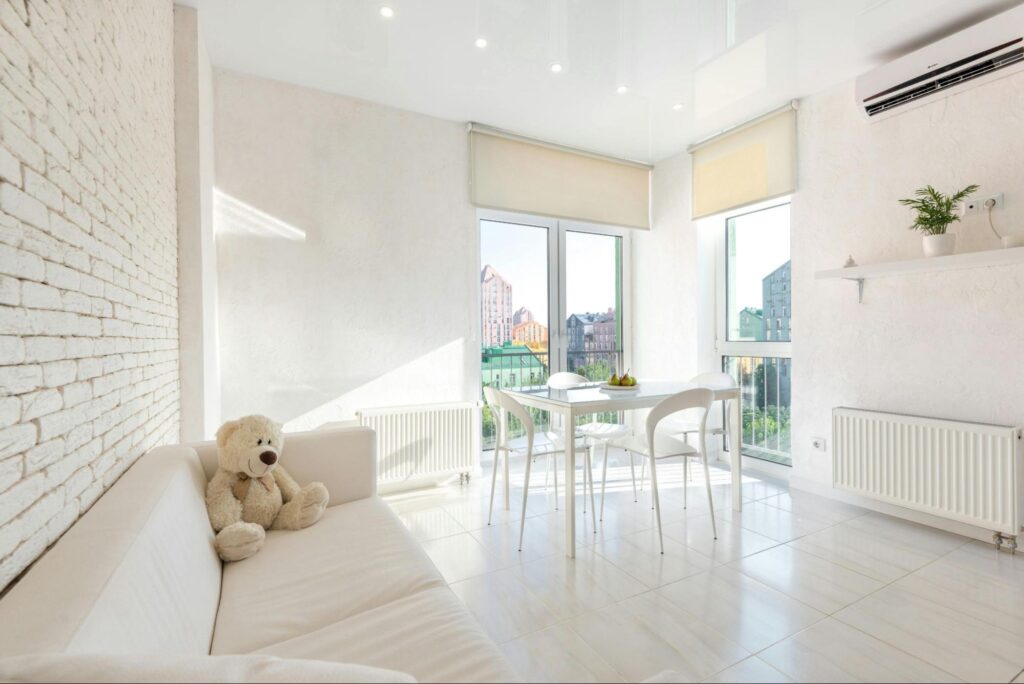Understanding Static Cling and Adhesive Window Films
When it comes to window films, there are two primary options to consider: static cling and adhesive. Both types serve various purposes and offer unique advantages and disadvantages.
Window films are a versatile solution for enhancing the functionality and appearance of glass surfaces. They can be used in residential, commercial, and even automotive settings to address a wide range of needs, from privacy and security to energy efficiency and decorative purposes.
What is Static Cling Window Film?
Static Cling window film is a non-adhesive film that sticks to glass surfaces through static electricity. It is easy to apply and remove, making it a convenient option for temporary use. This type of film is often used for decorative purposes, such as adding privacy or enhancing the aesthetics of a space.
One of the key benefits of static cling window film is its versatility. It can be easily repositioned or removed without leaving any residue behind, making it an ideal choice for renters or individuals looking for a temporary solution. Additionally, static cling films are available in a wide range of designs, patterns, and opacity levels, allowing for customization to suit different preferences and styles.
What is Adhesive Window Film?
In contrast, adhesive window film requires the use of adhesive to stick to glass surfaces. This film creates a permanent bond, offering long-lasting durability. Adhesive window film provides enhanced privacy, and UV protection, and can even help reduce energy costs by blocking out excessive heat or cold.
Adhesive window films are known for their durability and resistance to moisture, making them suitable for high-humidity environments like bathrooms or kitchens. They are also available in a variety of finishes, including frosted, stained glass, and mirrored options, allowing for a more customized and upscale look. While adhesive films may require more effort to install compared to static cling films, they offer a more permanent solution for those seeking lasting benefits.
The Advantages of Static Cling Window Film
Easy Installation and Removal
One of the major benefits of static cling window film is its ease of installation and removal. Unlike adhesive film, which requires precision and expertise, static cling film simply needs to be applied to the glass surface. It adheres instantly and can be effortlessly repositioned if needed. When it’s time to remove the film, there is no residue or damage left behind, making it ideal for temporary needs.
Furthermore, the installation process of static cling window film does not require any additional tools or chemicals, making it a hassle-free DIY project for homeowners and renters alike. This convenience allows you to update the look of your windows without the need for professional help, saving both time and money.
Reusability and Cost-Effectiveness
Static cling window film can be reused multiple times, allowing you to change designs or relocate the film as desired. This reusability factor makes it a cost-effective solution compared to adhesive films, which usually require replacement once removed. Whether you want to update your window decor or relocate the film to a different area, static cling options offer flexibility without breaking the bank.
Moreover, the durability of static cling window film ensures that it maintains its quality and adhesion properties even after multiple uses. This longevity adds to its cost-effectiveness, providing long-term value for your investment in window treatments.
Versatility and Aesthetic Appeal
Static cling window film comes in a wide range of designs, patterns, and textures, allowing you to find the perfect style to suit your taste and decor. Whether you prefer frosted glass for added privacy or want to showcase an eye-catching design, static cling film offers versatility that can transform the look and feel of any space. It is an excellent option for both residential and commercial applications.
Additionally, some static cling films offer UV protection, helping to block harmful rays and reduce heat transfer through windows. This added functionality not only enhances the practicality of the film but also contributes to energy efficiency in your home or office environment, making it a smart choice for those looking to improve insulation and reduce utility costs.
The Disadvantages of Static Cling Window Film
Durability Concerns
One drawback of static cling window film is that it may not be as durable as adhesive film. Over time, its static cling properties may diminish, potentially causing the film to peel or bubble. Additionally, static cling film is more prone to damage from cleaning agents or harsh weather conditions. Therefore, it may require more frequent replacement compared to adhesive film.
Another factor to consider regarding the durability of static cling window film is its susceptibility to scratches. Due to its thin and flexible nature, static cling film can easily get scratched by sharp objects or even by pets with sharp claws. This can detract from the overall appearance of the film and may necessitate early replacement to maintain a clean look on your windows.
Limited Privacy Protection
While static cling window film offers some level of privacy, it is not as effective as adhesive films. This type of film tends to have a lower opacity, allowing more light to pass through and reducing its ability to block the view from outsiders. If privacy is a top concern, adhesive window film would be a better choice.
Moreover, the limited privacy protection of static cling window film can be further compromised at night or in low-light conditions. The reduced opacity of the film may not be sufficient to prevent silhouettes or shadows from being visible through the windows, potentially compromising your privacy and security. For areas where privacy is crucial, especially during nighttime, considering alternative window treatment options may be advisable.
The Advantages of Adhesive Window Film
Long-lasting and Durable
Adhesive window film provides exceptional durability. Once applied, the adhesive creates a strong bond that is resistant to peeling or bubbling. It can withstand cleaning agents and various weather conditions without losing its effectiveness. This long-lasting quality ensures that adhesive film remains in place for years, offering noteworthy benefits over time.
Moreover, the durability of adhesive window film extends beyond just its physical longevity. By acting as a protective barrier on your windows, it can help prevent scratches, chips, or other damage that may occur over time. This added layer of defense not only enhances the longevity of your windows but also saves you money on potential repairs or replacements in the future.
Superior Privacy and UV Protection
Adhesive window film excels in providing privacy and UV protection. Its higher level of opacity significantly reduces visibility from outside, ensuring your privacy is well-maintained. Moreover, the adhesive film blocks harmful UV rays from entering your space, protecting your furnishings, floors, and even your skin from fading or sun damage.
Furthermore, the UV protection offered by adhesive window film can have health benefits beyond just preserving your interior decor. By reducing UV exposure, you lower the risk of skin damage and potential health issues associated with prolonged sun exposure. This added layer of protection can create a safer and more comfortable environment for you and your loved ones, making adhesive window film a valuable investment in your well-being.
The Disadvantages of Adhesive Window Film
Difficult Installation Process
Compared to static cling film, adhesive window film requires a more precise and careful installation process. The adhesive side must be properly aligned and smoothed to avoid any air bubbles or imperfections. This installation process may necessitate the assistance of a professional for optimal results, especially for larger or more complex window surfaces.
During the installation of adhesive window film, it is crucial to ensure that the surface of the window is completely clean and free of any dust or debris. Even the smallest speck of dirt can cause imperfections or air bubbles under the film, affecting its overall appearance and performance. Taking the time to thoroughly clean the window before application is essential for a successful installation.
Permanent Nature and Removal Challenges
Once adhesive window film is applied, it is intended to be a permanent solution. Removing adhesive film can be challenging and time-consuming. It may leave behind residue that requires special cleaning agents or techniques to remove completely. If you anticipate wanting to change the film in the future or are looking for a temporary solution, adhesive film may not be the most suitable choice.
When considering adhesive window film, it is important to keep in mind that its permanent nature means that it is designed for long-term use. While this can be advantageous for those seeking a durable solution, it may not be ideal for individuals who prefer to change their window decor frequently. Additionally, the removal process can be labor-intensive, requiring patience and the use of specific products to dissolve the adhesive effectively without damaging the underlying surface.
Conclusion
Static cling and adhesive window films both have their pros and cons. Whether you prioritize easy installation, reusability, and versatility, or durability, privacy, and UV protection, your choice should ultimately depend on your specific needs and preferences. Consider the advantages and disadvantages outlined above to make an informed decision that best suits your window film requirements.


